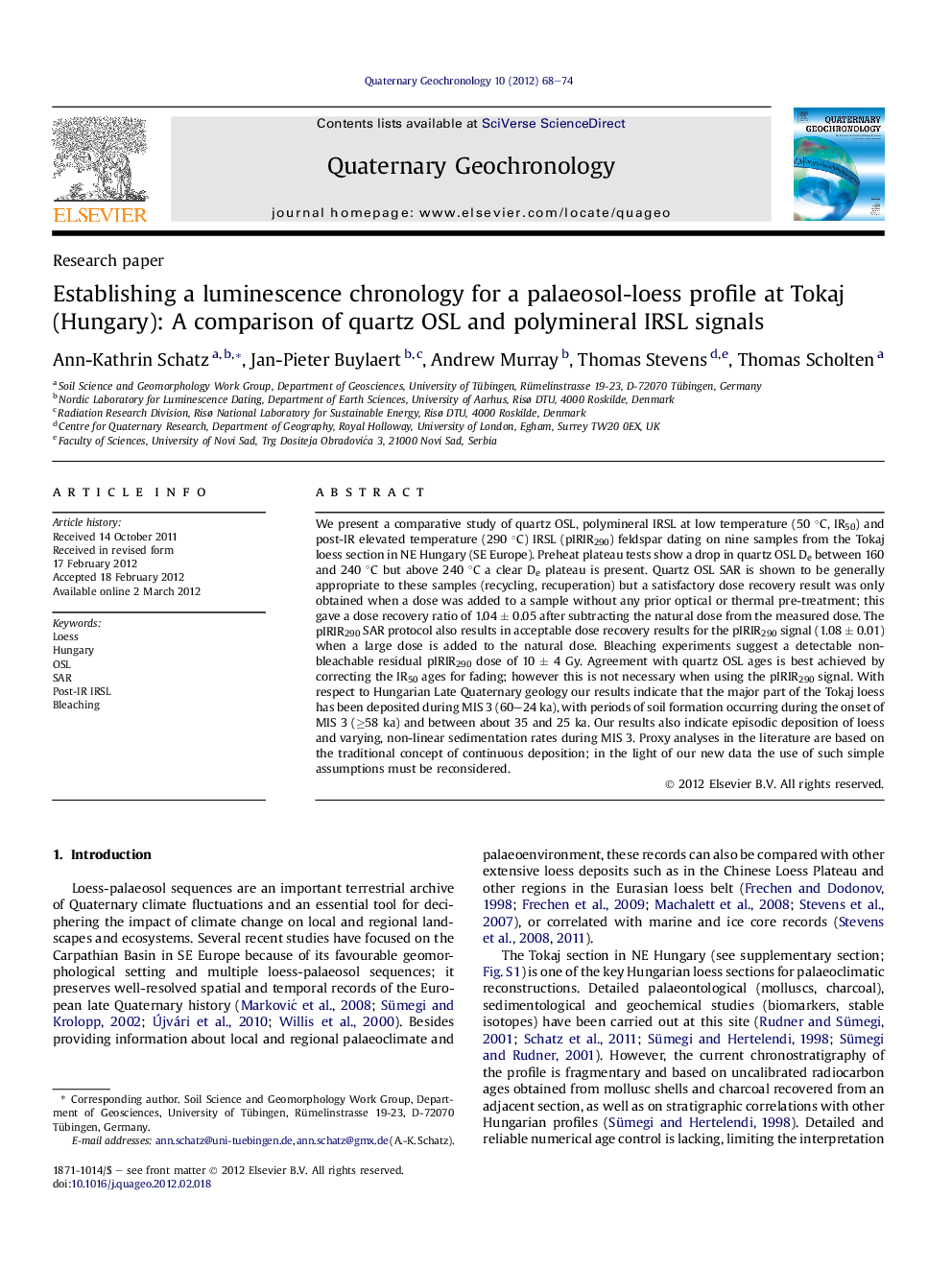| کد مقاله | کد نشریه | سال انتشار | مقاله انگلیسی | نسخه تمام متن |
|---|---|---|---|---|
| 4725103 | 1639866 | 2012 | 7 صفحه PDF | دانلود رایگان |

We present a comparative study of quartz OSL, polymineral IRSL at low temperature (50 °C, IR50) and post-IR elevated temperature (290 °C) IRSL (pIRIR290) feldspar dating on nine samples from the Tokaj loess section in NE Hungary (SE Europe). Preheat plateau tests show a drop in quartz OSL De between 160 and 240 °C but above 240 °C a clear De plateau is present. Quartz OSL SAR is shown to be generally appropriate to these samples (recycling, recuperation) but a satisfactory dose recovery result was only obtained when a dose was added to a sample without any prior optical or thermal pre-treatment; this gave a dose recovery ratio of 1.04 ± 0.05 after subtracting the natural dose from the measured dose. The pIRIR290 SAR protocol also results in acceptable dose recovery results for the pIRIR290 signal (1.08 ± 0.01) when a large dose is added to the natural dose. Bleaching experiments suggest a detectable non-bleachable residual pIRIR290 dose of 10 ± 4 Gy. Agreement with quartz OSL ages is best achieved by correcting the IR50 ages for fading; however this is not necessary when using the pIRIR290 signal. With respect to Hungarian Late Quaternary geology our results indicate that the major part of the Tokaj loess has been deposited during MIS 3 (60–24 ka), with periods of soil formation occurring during the onset of MIS 3 (≥58 ka) and between about 35 and 25 ka. Our results also indicate episodic deposition of loess and varying, non-linear sedimentation rates during MIS 3. Proxy analyses in the literature are based on the traditional concept of continuous deposition; in the light of our new data the use of such simple assumptions must be reconsidered.
► The first complete chronostratigraphy for the Tokaj loess profile is established.
► We compare SAR quartz OSL ages with polymineral IR50 and pIRIR290 ages.
► pIRIR290 ages are in agreement with quartz OSL ages.
► Laboratory bleaching experiments show an unbleachable residual for IR50 and pIRIR290.
► Loess accumulation rates are highly variable.
Journal: Quaternary Geochronology - Volume 10, July 2012, Pages 68–74